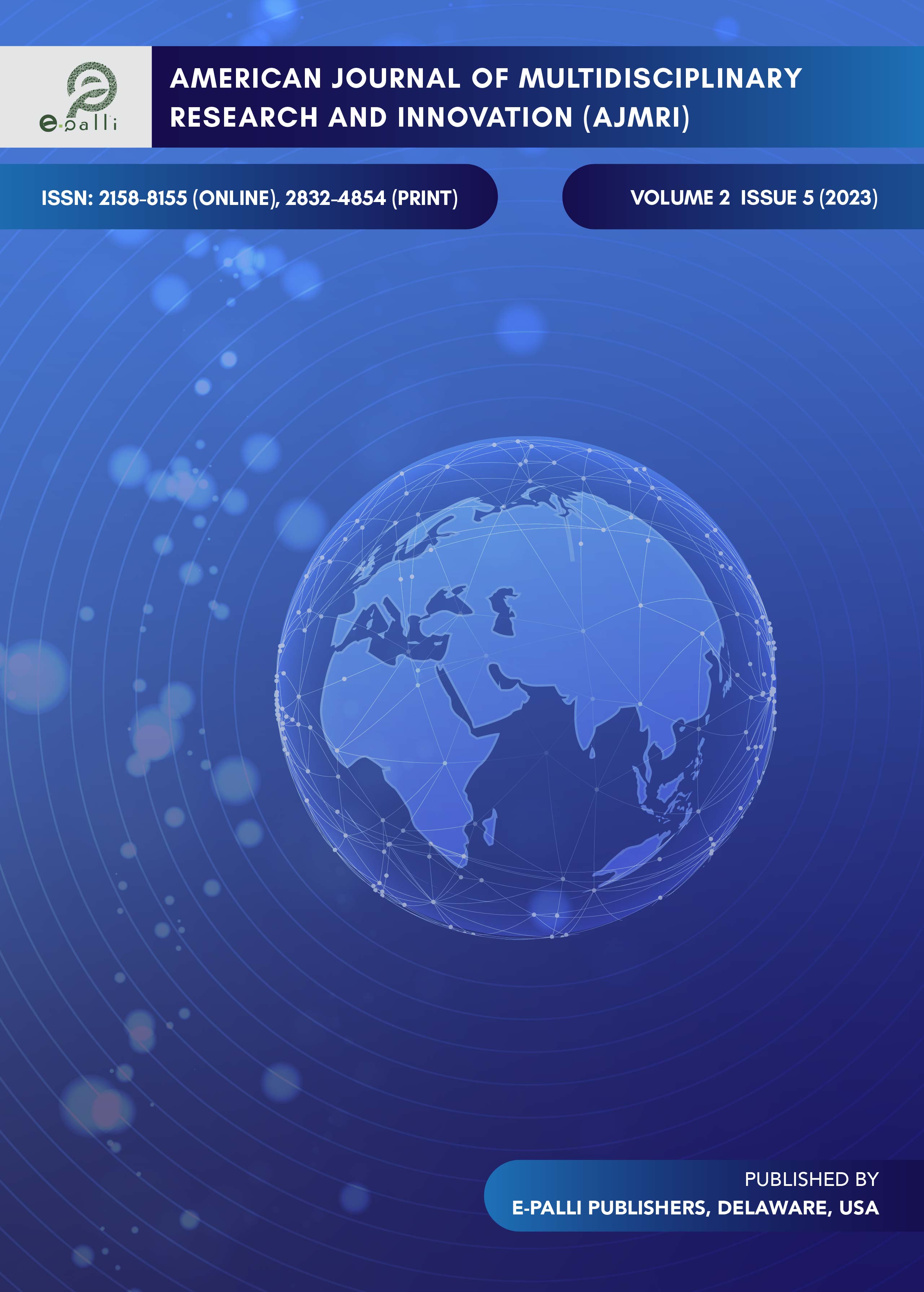Infrastructure Deficit and Social Challenges: The Ripple Effects on Sustainability in Ghana
DOI:
https://doi.org/10.54536/ajmri.v2i5.1732Keywords:
Challenges Deficit, Infrastructure, Ripple Effects, Social Challenges SustainabilityAbstract
The lack of intercontinental and intracontinental trade integration in Africa is the result of underdevelopment in the area of poor infrastructure. The Ghanaian economy is bedeviled with deficits at both the economic and infrastructure levels. Only 25% of the rural population has access to road, and 34% of the total African population have access to roads. The lack of infrastructure investment has contributed to the infrastructure deficit in Africa. 100,000 Ghanaians are homeless resulting in increased cases of teenage pregnancy. A coordinated action including priority setting and serious monitoring of the performance of fund mobilization, agreeing on contribution levels for each state as well as ensuring close monitoring of implementation and performance is recommended.
Downloads
References
Adam. H. (2017). Larabanga Mosque, Larabanga, Ghana: The first mosque in Ghana is known as the “Mecca of West Africa. Retreived from https://www.atlasobscura.com/places/larabanga-mosque
Bueno. W. (2017). Infrastructure Gap What does it mean for public policy makers? Retreived from https://www.linkedin.com/pulse/infrastructure-gap-what-does-mean-public-policy-willian-bueno-e-silva
Buys P., Deichmann U., Wheeler D. 2006. Road Network Upgrading and Overland Trade Expansion in Sub-Saharan Africa. World Bank Policy Research Working Paper No. 4097. Washington, DC: The World Bank.
Coit, K. (2001). The other face of informality and illegality. N-AERUS Workshop:” Coping with Informalità and Illegalità in Human Settlements in Developing Cities”, Belgio.
Crushell et al. (2019). The Impact of Homelessness and Inadequate Housing on Children’s Health [The Faculty of Pediatrics is the national training and professional body for pediatricians in Ireland]. https://rcpi-live-cdn.s3.amazonaws.com/wp-content/uploads/2019/11/Impact-of-Homelessness-full-position-paper-final.pdf
Deliotte. (2018). Addressing Africa’s Infrastructure Challenges. Retrieved from https://www2.deloitte.com/content/dam/Deloitte/global/Documents/Energy-and-Resources/dttl-er-power-addressing-africas-infrastructure-challenges.pdf
Duncan, J. (2005). Causes of inadequate housing in Latin America and the Caribbean. Habitat for Humanity, Latin America and Caribbean. Retrieved from https://www.habitat.org/lc/lac/pdf/causes_of_inadequate_housing_in_lac.pdf
Dupuy, G., van Schaick, J., & Klaasen, I. T. (2008). Urban networks: Network urbanism, 7. Techne press Amsterdam.
Electronic Irish Statute. (1988). Housing Act [Data set]. Office of the Attorney General. https://www.irishstatutebook.ie/eli/1988/act/28/enacted/en/html
Frischman, B. (2005). An Economic Theory of Infrastructure and Commons Management. Minnesota Law Review, 89, 917-+.
Gaal, H. O., & Afrah, N. A. (2017). Lack of Infrastructure: The Impact on Economic Development as a case of Benadir region and Hir-shabelle, Somalia. Developing Country Studies, 7(1).
Gobena, G. A. (2015). Family socio-economic status effect on students’ academic achievement at college of education and behavioral sciences, Haramaya University, Eastern Ethiopia. Journal of Teacher Education and Educators, 7(3), 207–222.
Goldin, I. (2019). Why do some countries develop and others not. Development in Turbulent Times, 13.
Graham, S. (2001). Splintering Urbanism. University of Durham, UK.
Habitat. (2015). Habitat III: Third United Nations Conference on Housing and Sustainable Urban Development. Journal of Education for Sustainable Development, 9(2), 125–125.
ILO. (2017a). Background Studies on Infrastructure Sector in Ghana [Directorate of Research Innovation and Consultancy University of Cape Coast]. https://www.ilo.org/wcmsp5/groups/public/---ed_emp/---ifp_skills/documents/publication/wcms_673143.pdf
ILO. (2017b). Background Studies on Infrastructure Sector in Ghana [Directorate of Research Innovation and Consultancy University of Cape Coast]. https://www.ilo.org/wcmsp5/groups/public/---ed_emp/---ifp_skills/documents/publication/wcms_673143.pdf
Jordan, S. R. (2007). The public interest in public administration: An investigation of the communicative foundations of the public interest standard [PhD Thesis]. Texas A&M University.
Kwofie, T.E., Adinyira, E. and Botchway, E. (2011) Historical overview of housing provision in pre and post independence Ghana In: Laryea, S., Leiringer, R. and Hughes, W. (Eds) Procs West Africa Built Environment Research (WABER) Conference, 19-21 July 2011, Accra, Ghana, 541-557.
Mafusire, A., Brixiova, Z., Anyanwu, J., & Meng, Q. (2017). “Twelve: Infrastructure deficit and opportunities in Africa”. In Infrastructure in Africa. Bristol, UK: Policy Press. Retrieved Aug 19, 2023, from https://doi.org/10.51952/9781447326656.ch012
Morrin H & O’Donoghue Hynes B. (2018). Family report: Analysis of the newly homeless families accommodated in the Dublin Region’s homeless services in 2017. Dublin Region Homeless Executive. https://www.homelessdublin.ie/content/files/Final-Launch-Family-Report-June-2018-print-version-2.pdf
Nijkamp, P. (2000). Infrastructure and suprastructure in regional competition: A deus ex machina? Springer.
Nyarko, J. (2018). History of The Abuakwas of Akyem, Ghana. https://doi.org/10.13140/RG.2.2.34006.11849
Pouliquen, L. (2000). Infrastructure and poverty. Background Paper to the World Bank’s, 2001.
Sahoo, P., & Dash, R. K. (2012). Economic growth in South Asia: Role of infrastructure. The Journal of International Trade & Economic Development, 21(2), 217–252.
Sherraden, S. (2011). The Infrastructure Deficit Policy Paper. Published by the New America. 740 15th Street NW, Suite 900, Washington, DC. https://www.newamerica.org/economic-growth/policy-papers/the-infrastructure
Thelwell, K. (2020, September 17). 5 Facts About Homelessness in Ghana. The Borgen Project. Retreved from https://borgenproject.org/homelessness-in-ghana/
Thompson, S. J., Bender, K. A., Lewis, C. M., & Watkins, R. (2008). Runaway and pregnant: Risk factors associated with pregnancy in a national sample of runaway/homeless female adolescents. Journal of Adolescent Health, 43(2), 125–132.
Toro, B. (2016). The Pax Assyriaca: An example of historical evolution of civilisations [PhD Thesis]. University of Birmingham.
UN. (2020). Affordable Housing, Inclusive Economic Policies Key to Ending Homelessness, Speakers Say as Social Development Commission Begins Annual Session. Meetings Coverage and Press Releases. Retrieved from https://press.un.org/en/2020/soc4884.doc.htm
Ziblim, S. (2017). So Many Teen Mothers in My Village”: Factors Contributing to Teenage Pregnancy in West Mamprusi District in Ghana. Journal of Humanities and Social Studies, 3.
Downloads
Published
How to Cite
Issue
Section
License
Copyright (c) 2023 Francis Sarkodie Addo, Doreen Adu, Justine Chinoperekweyi

This work is licensed under a Creative Commons Attribution 4.0 International License.







